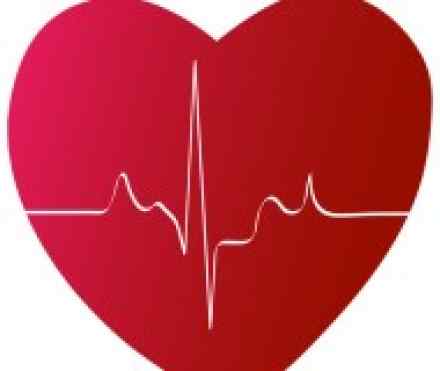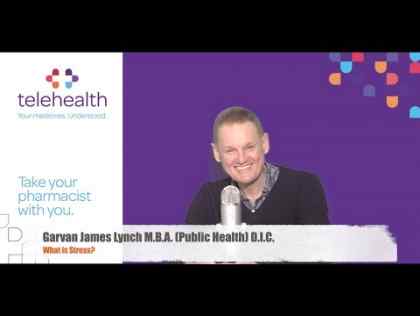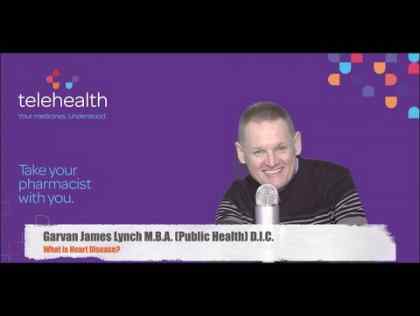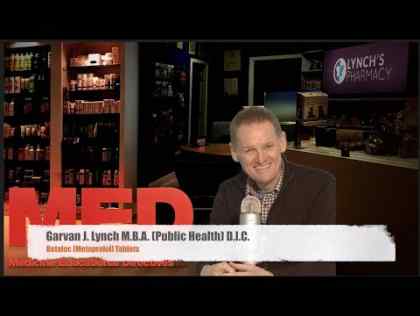
What is it?
- Heart rhythm problems (heart arrhythmias) occur when the electrical impulses in your heart that coordinate your heartbeats don't function properly, causing your heart to beat too fast, too slow or irregularly.
- Heart arrhythmias are common and usually harmless. Most people have occasional, irregular heartbeats that may feel like a fluttering or racing heart. However, some heart arrhythmias may cause bothersome — sometimes even life-threatening — signs and symptoms.
- Heart arrhythmia treatment can often control or eliminate irregular heartbeats. In addition, because troublesome heart arrhythmias are often made worse — or are even caused — by a weak or damaged heart, you may be able to reduce your arrhythmia risk by adopting a heart-healthy lifestyle.
Symptoms
Arrhythmias may not cause any signs or symptoms.
Some people do have noticeable arrhythmia symptoms, which may include:
- A fluttering in your chest
- A racing heartbeat (tachycardia)
- A slow heartbeat (bradycardia)
- Chest pain
- Shortness of breath
- Lightheadedness
- Dizziness
- Fainting (syncope) or near fainting
Noticeable signs and symptoms don't always indicate a serious problem. Some people who feel arrhythmias don't have a serious problem, while others who have life-threatening arrhythmias have no symptoms at all.
Causes
Before learning about what can cause an arrhythmia, first consider what should happen during a normal heartbeat.
What's a normal heartbeat?
- When your heart beats, the electrical impulses that cause it to contract must follow a precise pathway through your heart. Any interruption in these impulses can cause an arrhythmia.
- Your heart is divided into four hollow chambers. The chambers on each half of your heart form two adjoining pumps, with an upper chamber (atrium) and a lower chamber (ventricle).
- During a heartbeat, the smaller, less muscular atria contract and fill the relaxed ventricles with blood. This contraction starts when the sinus node — a small group of cells in your right atrium — sends an electrical impulse causing your right and left atria to contract.
- The impulse then travels to the center of your heart, to the atrioventricular node, which lies on the pathway between your atria and your ventricles. From here, the impulse exits the atrioventricular node and travels through your ventricles, causing them to contract and pump blood throughout your body.
- In a healthy heart, this process usually goes smoothly, resulting in a normal resting heart rate of 60 to 100 beats a minute. Athletes at rest commonly have a heart rate less than 60 beats a minute because their hearts are so efficient.
What causes an arrhythmia?
Many things can lead to, or cause, an arrhythmia, including:
- Scarring of heart tissue (such as from a heart attack)
- Heart disease
- High blood pressure
- Diabetes
- Overactive thyroid gland (hyperthyroidism)
- Smoking
- Excessive alcohol or caffeine intake
- Drug abuse
- Stress
- Medications
- Dietary supplements and herbal treatments
In a healthy person with a normal, healthy heart, it's unlikely for a long-lasting arrhythmia to develop without some outside trigger, such as an electrical shock or the use of illicit drugs. That's primarily because a healthy person's heart is free from any conditions that cause an arrhythmia, such as an area of scarred tissue.
However, in a diseased or deformed heart, the heart's electrical impulses may not travel through the heart properly, making arrhythmias more likely to develop.
Any heart condition that's changed the structure of your heart can lead to arrhythmia development due to:
- An inadequate amount of blood. If blood supply to the heart is somehow reduced, this can alter the ability of heart tissue — including the cells that conduct electrical impulses — to function properly.
- Damage to or death of heart tissue. This can affect the way electrical impulses spread in the heart.
Changes in the structure of the heart may come from:
- Coronary artery disease (CAD). CAD causes the arteries in your heart to narrow, which can eventually cause a portion of the heart to die from a lack of blood flow (heart attack). A heart attack causes scarring of the heart tissue, which may make it so electrical impulses can't travel normally through your heart to make it beat. This can cause the heart to beat dangerously fast (ventricular tachycardia) or to quiver (ventricular fibrillation).
- Cardiomyopathy. This occurs primarily when the walls in the lower half of your heart (ventricles) stretch and enlarge (dilated cardiomyopathy) or when the left ventricle wall thickens and constricts (hypertrophic cardiomyopathy). In either case, cardiomyopathy decreases your heart's blood-pumping efficiency and often leads to heart tissue damage.
- Valvular heart diseases. Leaking or narrowing of your heart valves can lead to stretching and thickening of your heart muscle. When the chambers become enlarged or weakened due to the added stress caused by the tight or leaking valve, there's an increased risk of developing an arrhythmia.
Types of arrhythmias
Doctors classify arrhythmias not only by where they originate (atria or ventricles) but also by the speed of heart rate they cause:
- Tachycardia. This refers to a fast heartbeat — a resting heart rate greater than 100 beats a minute.
- Bradycardia. This refers to a slow heartbeat — a resting heart rate less than 60 beats a minute.
Not all tachycardias or bradycardias mean you have heart disease. For example, during exercise it's normal to develop tachycardia as the heart speeds up to provide your tissues with more oxygen-rich blood.
Tachycardias in the atria
Tachycardias originating in the atria include:
- Atrial fibrillation. This fast and chaotic beating of the atrial chambers is a common arrhythmia. It mainly affects older people. Your risk of developing atrial fibrillation increases past age 60, mostly due to wear and tear on your heart, especially if you've had high blood pressure or other heart problems. During atrial fibrillation, the electrical signal that causes your heart to beat becomes uncoordinated. The atria beat so rapidly — as fast as 350 to 600 beats a minute — that instead of producing a single, forceful contraction, they quiver (fibrillate). One type of atrial fibrillation — paroxysmal fibrillation — can last a few minutes to an hour or more before returning to a regular heart rhythm. It can also be an ongoing problem. Atrial fibrillation can be dangerous, for over time it can cause more serious conditions, such as stroke.
- Atrial flutter. Atrial flutter is similar to atrial fibrillation. Both can occur, coming and going in an alternating fashion. The heartbeats in atrial flutter are more-organized and more-rhythmic electrical impulses than in atrial fibrillation. Atrial flutter can be life-threatening.
- Supraventricular tachycardia (SVT). SVT is a broad term that includes many forms of arrhythmia originating above the ventricles (supraventricular). SVTs usually cause a burst of rapid heartbeats that begins and ends suddenly and can last from seconds to hours. These bursts often start when the electrical impulse from a heartbeat begins to circle repeatedly through an extra pathway. SVT may cause your heart to beat 160 to 200 times a minute. SVT is often caused by an underlying heart condition. Although SVT is generally not life-threatening in an otherwise normal heart, symptoms from the racing heart may feel quite uncomfortable. These arrhythmias are common in young people.
- Wolff-Parkinson-White syndrome. One cause of SVT is known as Wolff-Parkinson-White syndrome. This arrhythmia is caused by an extra electrical pathway between the atria and the ventricles. This pathway may allow electrical current to pass between the atria and the ventricles without passing through the atrioventricular node, leading to short circuits and rapid heartbeats.
Tachycardias in the ventricles
Tachycardias occurring in the ventricles include:
- Ventricular tachycardia (VT). This fast, regular beating of the heart is caused by abnormal electrical impulses that start in the ventricles. Often these are due to a problem with the electrical impulse traveling around a scar from a previous heart attack. VT can cause the ventricles to contract more than 200 beats a minute. Most VT occurs in people with some form of heart-related problem, such as scars or damage within the ventricle muscle from coronary artery disease or a heart attack. Sometimes VT can last for 30 seconds or less (unsustained), and it is usually harmless, although it causes inefficient heartbeats. Still, an unsustained VT may put you at risk of more-serious ventricular arrhythmias, such as longer lasting (sustained) VT. An episode of sustained VT is a medical emergency. Without prompt medical treatment, sustained ventricular tachycardia often worsens into ventricular fibrillation.
- Ventricular fibrillation. In ventricular fibrillation, rapid, chaotic electrical impulses cause your ventricles to quiver uselessly instead of pumping blood. Without an effective heartbeat, your blood pressure plummets, instantly cutting off blood supply to your vital organs — including your brain. Most people lose consciousness within seconds and require immediate medical assistance, including cardiopulmonary resuscitation (CPR). Your chances of survival may be better if CPR is delivered until your heart can be shocked back into a normal rhythm with a device called a defibrillator. Without CPR or defibrillation, death results in minutes. Most cases of ventricular fibrillation are linked to some form of heart disease. Ventricular fibrillation is frequently triggered by a heart attack.
- Long QT syndrome. Long QT syndrome (LQTS) is a heart rhythm disorder that can potentially cause fast, chaotic heartbeats. The rapid heartbeats, caused by changes in the part of your heart that causes it to beat, may lead to fainting, which can be life-threatening. In some cases, your heart's rhythm may be so erratic that it can cause sudden death. You can be born with a genetic mutation that puts you at risk of long QT syndrome. In addition, more than 50 medications, many of them common, may cause long QT syndrome. Medical conditions such as congenital heart defects also may cause long QT syndrome.
Bradycardia — a slow heartbeat
Although a heart rate below 60 beats a minute while at rest is considered bradycardia, a low resting heart rate doesn't always signal a problem. If you're physically fit, you may have an efficient heart capable of pumping an adequate supply of blood with fewer than 60 beats a minute at rest. However, if you have a slow heart rate and your heart isn't pumping enough blood, you may have one of several bradycardias, including:
- Sick sinus. If your sinus node, which is responsible for setting the pace of your heart, isn't sending impulses properly, your heart rate may be too slow, or it may speed up and slow down intermittently. If your sinus node is functioning properly, sick sinus can be caused by scarring near the sinus node that's slowing, disrupting or blocking the travel of impulses.
- Conduction block. A block of your heart's electrical pathways can occur in or near the atrioventricular node, which lies on the pathway between your atria and your ventricles. A block can also occur along other pathways to each ventricle. Depending on the location and type of block, the impulses between the upper and lower halves of your heart may be slowed or blocked. If the signal is completely blocked, certain cells in the AV node or ventricles can make a steady, although usually slower, heartbeat. Some blocks may cause no signs or symptoms, and others may cause skipped beats or bradycardia.
Premature heartbeats
Although it often feels like a skipped heartbeat, a premature heartbeat is actually an extra beat between two normal heartbeats. Premature heartbeats occurring in the ventricles come before the ventricles have had time to fill with blood after a regular heartbeat.
Although you may feel an occasional premature beat, it seldom means you have a more serious problem. Still, a premature beat can trigger a longer lasting arrhythmia — especially in people with heart disease. Premature heartbeats are commonly caused by stimulants, such as caffeine from coffee, tea and soft drinks; over-the-counter cold remedies containing pseudoephedrine; and some asthma medications.
Risk factors
Certain factors may increase your risk of developing an arrhythmia. These include:
- Age. With age, your heart muscle naturally weakens and loses some of its flexibility. This may affect how electrical impulses are conducted.
- Genetics. Being born with a heart abnormality may affect your heart's rhythm.
- Coronary artery disease, other heart problems and previous heart surgery. Narrowed heart arteries, heart attack, abnormal valves, prior heart surgery, cardiomyopathy and other heart damage are risk factors for almost any kind of arrhythmia.
- Thyroid problems. Your metabolism speeds up when your thyroid gland releases too many hormones. This may cause fast or irregular heartbeats and may be linked to atrial fibrillation. Your metabolism slows when your thyroid gland doesn't release enough hormones, which may cause a bradycardia.
- Drugs and supplements. Over-the-counter cough and cold medicines containing pseudoephedrine and certain prescription drugs may contribute to arrhythmia development.
- High blood pressure. This increases your risk of developing coronary artery disease. It may also cause the walls of your left ventricle to thicken, which can change how electrical impulses travel through your heart.
- Obesity. Along with being a risk factor for coronary artery disease, obesity may increase your risk of developing an arrhythmia.
- Diabetes. Your risk of developing coronary artery disease and high blood pressure greatly increases with uncontrolled diabetes. In addition, episodes of low blood sugar (hypoglycemia) can trigger an arrhythmia.
- Obstructive sleep apnea. This disorder, in which your breathing is interrupted during sleep, can cause bradycardia and bursts of atrial fibrillation.
- Electrolyte imbalance. Substances in your blood called electrolytes, such as potassium, sodium, calcium and magnesium, help trigger and conduct the electrical impulses in your heart. Electrolyte levels that are too high or too low can affect your heart's electrical impulses and contribute to arrhythmia development.
- Alcohol consumption. Drinking too much alcohol can affect the electrical impulses in your heart or increase the chance of developing atrial fibrillation. In fact, development of atrial fibrillation after an episode of heavy alcohol intake is sometimes called "holiday heart syndrome." Chronic alcohol abuse may cause your heart to beat less effectively and can lead to cardiomyopathy.
- Caffeine or nicotine use. Caffeine, nicotine and other stimulants can cause your heart to beat faster and may contribute to the development of more serious arrhythmias. Illicit drugs such as amphetamines and cocaine may profoundly affect the heart and lead to many types of arrhythmias or to sudden death due to ventricular fibrillation.
Complications
Certain arrhythmias may increase your risk of developing conditions such as:
- Stroke. When your heart quivers, it's unable to pump blood effectively, which can cause blood to pool. This can cause blood clots to form. If a clot breaks loose, it can travel to and obstruct a brain artery, causing a stroke. This may damage a portion of your brain or lead to death.
- Heart failure. This can result if your heart is pumping ineffectively for a prolonged period due to a bradycardia or tachycardia, such as atrial fibrillation. Sometimes, controlling the rate of an arrhythmia that's causing heart failure can improve your heart's function.
Diagnosis
To diagnose a heart arrhythmia, your doctor may ask about — or test for — conditions that may trigger your arrhythmia, such as heart disease or a problem with your thyroid gland. Your doctor may also perform heart monitoring tests specific to arrhythmias. These may include:
- Electrocardiogram (ECG). During an ECG, sensors (electrodes) that can detect the electrical activity of your heart are attached to your chest and sometimes to your limbs. An ECG measures the timing and duration of each electrical phase in your heartbeat.
- Holter monitor. This portable ECG device can be worn for a day or more to record your heart's activity as you go about your routine.
- Event monitor. For sporadic arrhythmias, you keep this portable ECG device at home, attaching it to your body and using it only when you have symptoms of an arrhythmia. This lets your doctor check your heart rhythm at the time of your symptoms.
- Echocardiogram. In this noninvasive test, a hand-held device (transducer) placed on your chest uses sound waves to produce images of your heart's size, structure and motion.
- Cardiac computerized tomography (CT) or magnetic resonance imaging (MRI). Although more commonly used to check for heart failure, these tests can be used to diagnose heart problems and to detect heart arrhythmias. In a cardiac CT scan, you lie on a table inside a doughnut-shaped machine. An X-ray tube inside the machine rotates around your body and collects images of your heart and chest. In a cardiac MRI, you lie on a table inside a long tube-like machine that produces a magnetic field. The magnetic field aligns atomic particles in some of your cells. When radio waves are broadcast toward these aligned particles, they produce signals that vary according to the type of tissue they are. The signals create images of your heart that can help your doctor determine the cause of your heart arrhythmia.
If your doctor doesn't find an arrhythmia during those tests, he or she may try to trigger your arrhythmia with other tests, which may include:
- Stress test. Some arrhythmias are triggered or worsened by exercise. During a stress test, you'll be asked to exercise on a treadmill or stationary bicycle while your heart activity is monitored by an ECG. If you have difficulty exercising, your doctor may use a drug to stimulate your heart in a way that's similar to exercise.
- Tilt table test. Your doctor may recommend this test if you've had fainting spells. Your heart rate and blood pressure are monitored as you lie flat on a table. The table is then tilted as if you were standing up. Your doctor observes how your heart and the nervous system that controls it respond to the change in angle.
- Electrophysiologic testing and mapping. In this test, thin, flexible tubes (catheters) tipped with electrodes are threaded through your blood vessels to a variety of spots within your heart. Once in place, the electrodes can map the spread of electrical impulses through your heart. In addition, your cardiologist can use the electrodes to stimulate your heart to beat at rates that may trigger — or halt — an arrhythmia. This allows your doctor to see the location of the arrhythmia and what may be causing it.
References:
https://www.irishheart.ie/iopen24/arrhythmia-t-7_19_51.html
http://www.medicinenet.com/arrhythmia_irregular_heartbeat/article.htm
http://www.heart.org/HEARTORG/Conditions/Arrhythmia/SymptomsDiagnosisMonitoringofArrhythmia/Symptoms-Diagnosis-Monitoring-of-Arrhythmia_UCM_002025_Article.jsp#.V0y6HFdlnGI
https://en.wikipedia.org/wiki/Cardiac_arrhythmia




